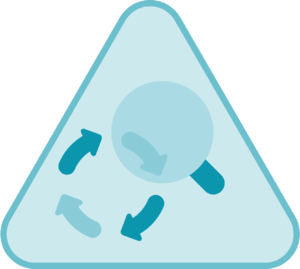TELOS Assignment 2: Landscape System Analysis (2023-24)
- Back to assignments overview
- Back to seminar overview
2.1 Landscape System Analysis: Understanding the story so far
- Team assignment
- Assigned: 09.10.2023
- Presentation: 20.11.2023
- Download presentation template
- Submission: 11.12.2023 on ILIAS
The first part of our Landscape Economy seminar introduces the system logic of various relevant land use sectors such as agriculture, dwelling, production, mobility and many more. Your task is to read the landscape of your study area from the perspective of these different land use systems. This interpretation is based on your existing knowledge and the additional knowledge you will gain from our lectures and readings.
Later on, you will integrate these perspectives into your landscape system model.
Within your team, a possible approach is to distribute the land use sectors. This way, individual members can do an in-depth research on them. Later on, you integrate them into a shared model. Try to combine rigorous analysis with creative representation.
The following guiding questions may help you to develop your system analysis. You may address them sector by sector first and then integrate them:
- How has this landscape developed over the past to its present state? Which cause-effect relationships have driven this development? Which value schemes were dominating?
- Which values has this landscape generated by this past transformation? Which values got lost? You may use the UN Sustainable Development Goals for making this explicit and comparable across locations.
- What are the main circular relationships in your landscape? Which resources come in from elsewhere (such as workforce, energy, food, materials….) and where do they end up? Which resources flow out from your landscape to other places (such as products, knowledge…)? Show these circular relationships.
- Combine the different land use layers: Which goal conflicts exist? Who/what wins and who/what loses?
Presentation time & format
- Prepare a group presentation with your findings.
- We will present and discuss your approach on November 20, 2023 in parallel seminar sessions.
- You submit this assignment together with its second part on December 11 (see below)
- Use the presentation template
2.2 Landscape System Analysis: Forecasting
- Team assignment
- Assigned: 09.10.2023
- Presentation: 11.12.2023
- Download presentation template
- Submission: 11.12.2023
Based on your understanding and evaluation of how and why your landscape has evolved over time to its present state, you are now going to forecast. Try to look at least 50 years ahead: How might your landscape operate then?
For this, it will be necessary to take assumptions of the future and to imagine future cause-effect relationships.
The following guiding questions may help you with this exercise:
- Which developments might impact your landscape over the coming 50 years? Try to integrate local and global developments and multiple sectors, based on your knowledge from the TELOS lectures.
- Reflect on the future cause-effect relationships: Which pressures on your landscape are plausible? Who and what in your landscape will be impacted in the future?
- Try to forecast different variants, ranging from extreme to plausible, and visualise them taking the specifics of your local landscape into account.
- Evaluate these futures, for example in relation to the UN Sustainable Development Goals. Which future needs to be avoided and why? And which future should we build and why?
- Make sure that your assumptions are rooted in locally relevant landscape knowledge and plausible data gathered during your analysis.
- Make sure that you identify a sustainability challenge in your landscape that you want to address further in the next assignment.
Presentation and submission time & format
- Prepare a team presentation with your findings. We will present and discuss your approach on December 11, 2023 in parallel seminar sessions.
- You submit both parts of this assignment together on December 11.
- Submission Link: on ILIAS
- Assignment 2 will be graded and it will determine 40% of your final grade.
Evaluation criteria for assignment 2 (both parts)
- Degree to which a variety of sectors and land use dimensions have been taken into account.
- Consistency and logical clarity of analysis, interpretation and argumentation.
- Degree to which the team succeeded in visualising system complexity, balancing analytical depth, readability and comprehensibility of graphical system representations and maps.
- Degree of critical awareness of sustainability goal conflicts.
- Good time management and communication during team presentations.
- Thoughtful response to questions during discussions.
